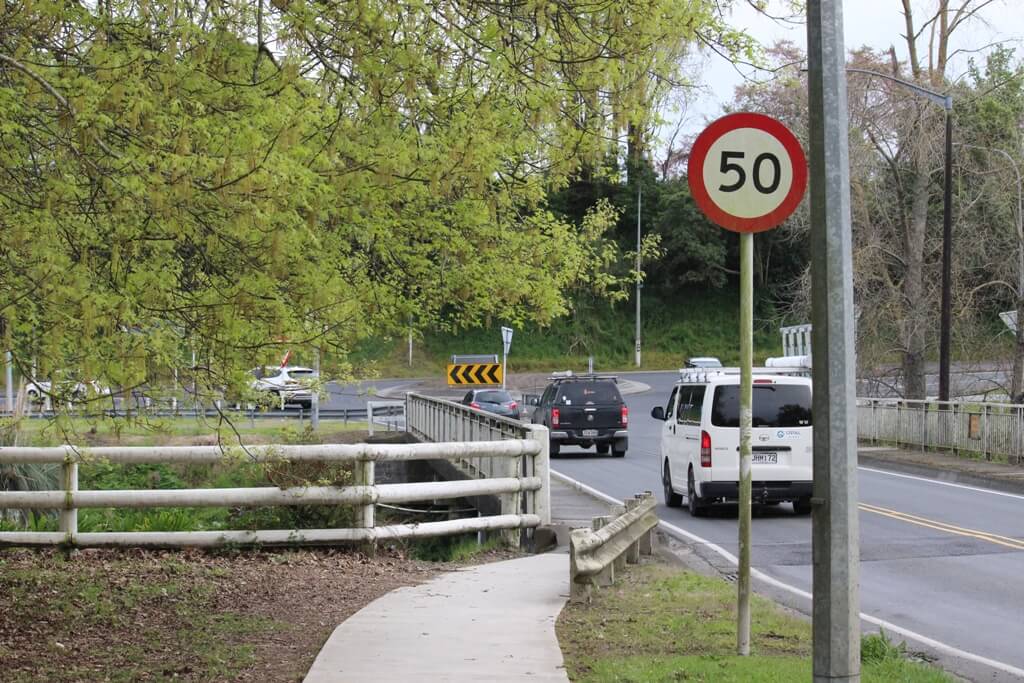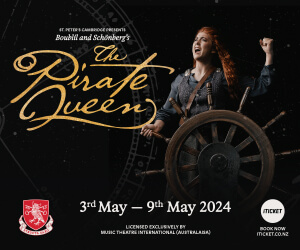
Cambridge man John Barns Graham points to the spot where he believes Cambridge’s first bridge actually stood.
John Barns Graham is on a mission to set the record straight.
The retired farmer, who has a keen interest in history, began looking into the history of Cambridge’s bridges about 10 months ago, sparked by plans to build a third bridge in the town.
He was surprised to discover inconsistencies between the accepted history of Cambridge “as widely published” and newspaper reports of the day.
Now, with New Zealand history becoming part of the school curriculum, he says it’s time to correct mistakes that appear “online in Wikipedia, Waipā District Council’s website and in several eminent historical publications”.
John contacted Cambridge News highlighting what he believes are several errors in ‘Bridging the Waikato River’, a story on Waipā District Council’s website attributed to edited excerpts from a book celebrating 150 years of Waipā.
According to the story, Cambridge’s first bridge was built in 1870 in the spot where Fergusson Bridge (known as the ‘low level bridge’) stands today.
He says this is not correct: The bridge was actually built 70m downstream at site where a punt had been operating to take people and goods across the river.
According to the online story, floods struck Cambridge in November 1874, lifting the timber bridge and sweeping it downstream to Hamilton.
However, John says articles in the Waikato Times and New Zealand Herald show the floods actually happened 13 months later, in December 1875.
A report on page two of the Waikato Times on December 11, 1875, tells of how, at 7.40pm the previous evening “with a crash that was heard from some distance”, the bridge “parted from either bank and was swept away in a single piece”.
“Word of the event was at once telegraphed to Major Clare,” the article reads, “with a request that he would, with his men, endeavour at Hamilton to intercept the wreck on its passage down, lest it injure the bridge in course of construction at Ngaruawahia”.
According to ‘Bridging the Waikato River’, “a constable bravely swam to intercept the bridge and secure it by rope to the shore”.
But John says press reports of the day contradict this.
“The very full description in the Waikato Times of December 14 talks about two boats going out to the two sections of bridge as it had broken in two before reaching Hamilton, and the heroic efforts to stop them before Ngaruawahia,” he said.
Another error in the online story, he believes, is in the claim a Howe Truss Girder bridge was constructed on the same site.
“Photographs show this bridge was actually placed some 70 metres upstream on the site where the Fergusson Bridge stands today,” he said.
He believed historians may have referred to a December 1898 supplement in the Waikato Argus newspaper entitled ‘The History of Cambridge’.
“It is a testament to the esteem held for the writer of that supplement that no one has questioned it until now,” he said.
John has made Waipā District Council, the Waikato Historical Society, the National Library, the New Zealand Government’s history department and two museums aware of his findings.
“It’s up to the experts to decide whether the national press reports of the day are correct, and so change the history books, and not me,” he said.
Cambridge Museum manager Elizabeth Harvey said she and her staff enjoyed talking with John about his research.
“By highlighting the printing error in William Rout’s “History of Cambridge”, published in the Waikato Argus in 1898 and finding the original newspaper reports in the Waikato Times on 11 December 1875, he has helped identify where the error began,” she said.
“We have the correct dates on our website and in new displays we are currently putting together for the museum. When histories are shared, errors will sometimes be made. Finding these errors and talking about them gives us a deeper understanding about where we live.”










